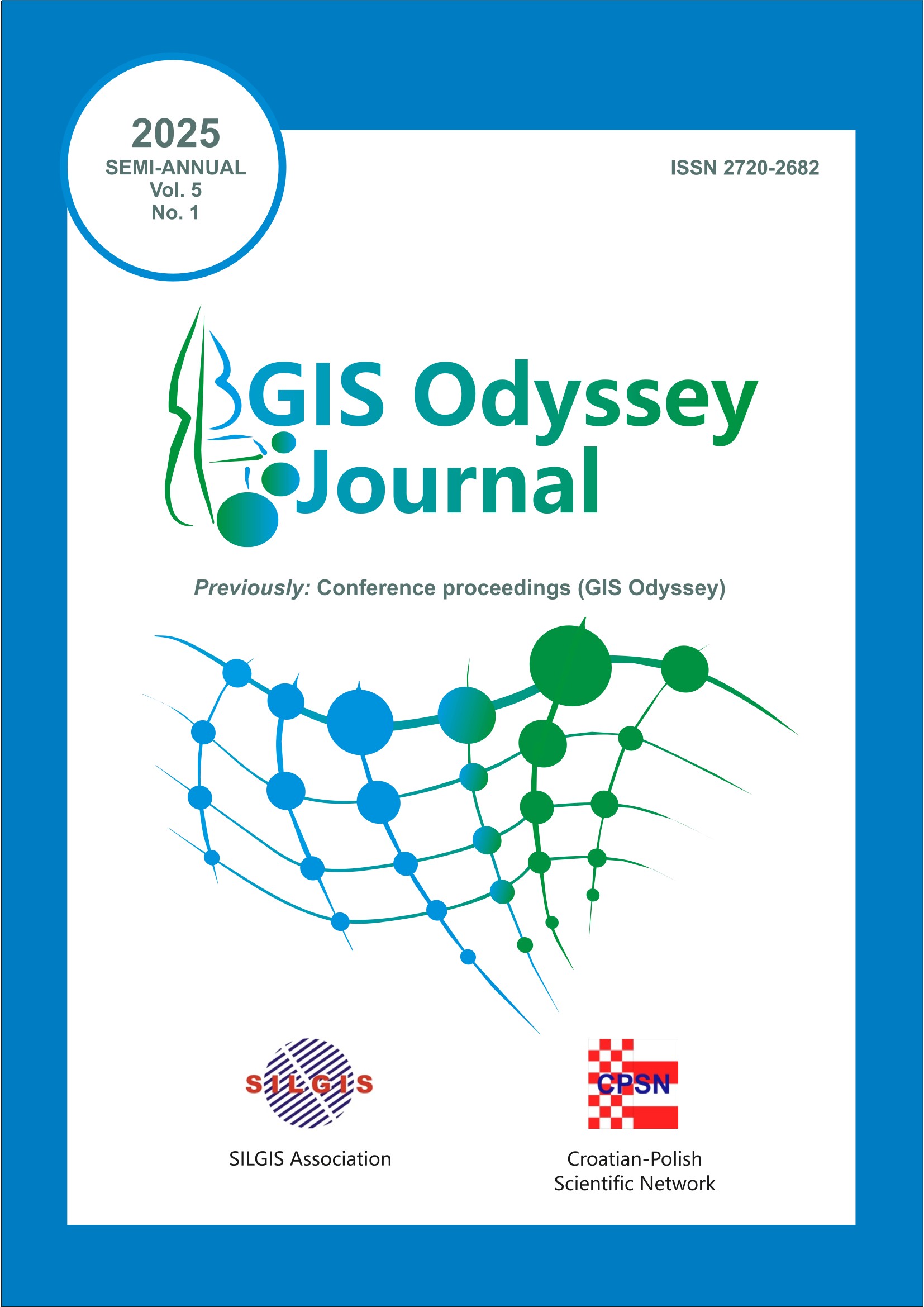ELEVATION-ONLY VS FULL PCC MODELS - THE IMPACT ON POSITIONING
DOI:
https://doi.org/10.57599/gisoj.2025.5.1.213Keywords:
phase center corrections (PCC), Global Navigation Satellite System (GNSS), positioningAbstract
Antenna phase center corrections (PCC) are now mandatory for high-accuracy Global Navigation Satellite System (GNSS) applications. Such corrections are being created nowadays using an anechoic chamber or an outdoor robot calibration method. Based on these two methods PCCs are created in the function of the zenith angle and azimuth of the incoming GNSS signal. However, some antennas still lack complete PCC as both approaches are time and money-consuming. In the case of some antennas, mostly low-cost ones, no real phase centrum location information is provided. For another group of antennas, so-called elevation-only PCC derived from relative outdoor calibration is available. Elevation-only PCC, after transformation, could be utilized together with full PCC models in common GNSS observation processing. In the publication, the authors analyzed the differences resulting from the use of elevation-only instead of full PCC models. Values of such differences can be treated as a bias introduced into the solution due to the use of simplified PCCs. The results obtained demonstrate that, in the analyzed case study, such biases are negligible and do not exceed 1 mm in any instance.
Downloads
Published
How to Cite
Issue
Section
License
This is an open access publication, which can be used, distributed and reproduced in any medium according to the Creative Commons CC-BY 4.0 License.







